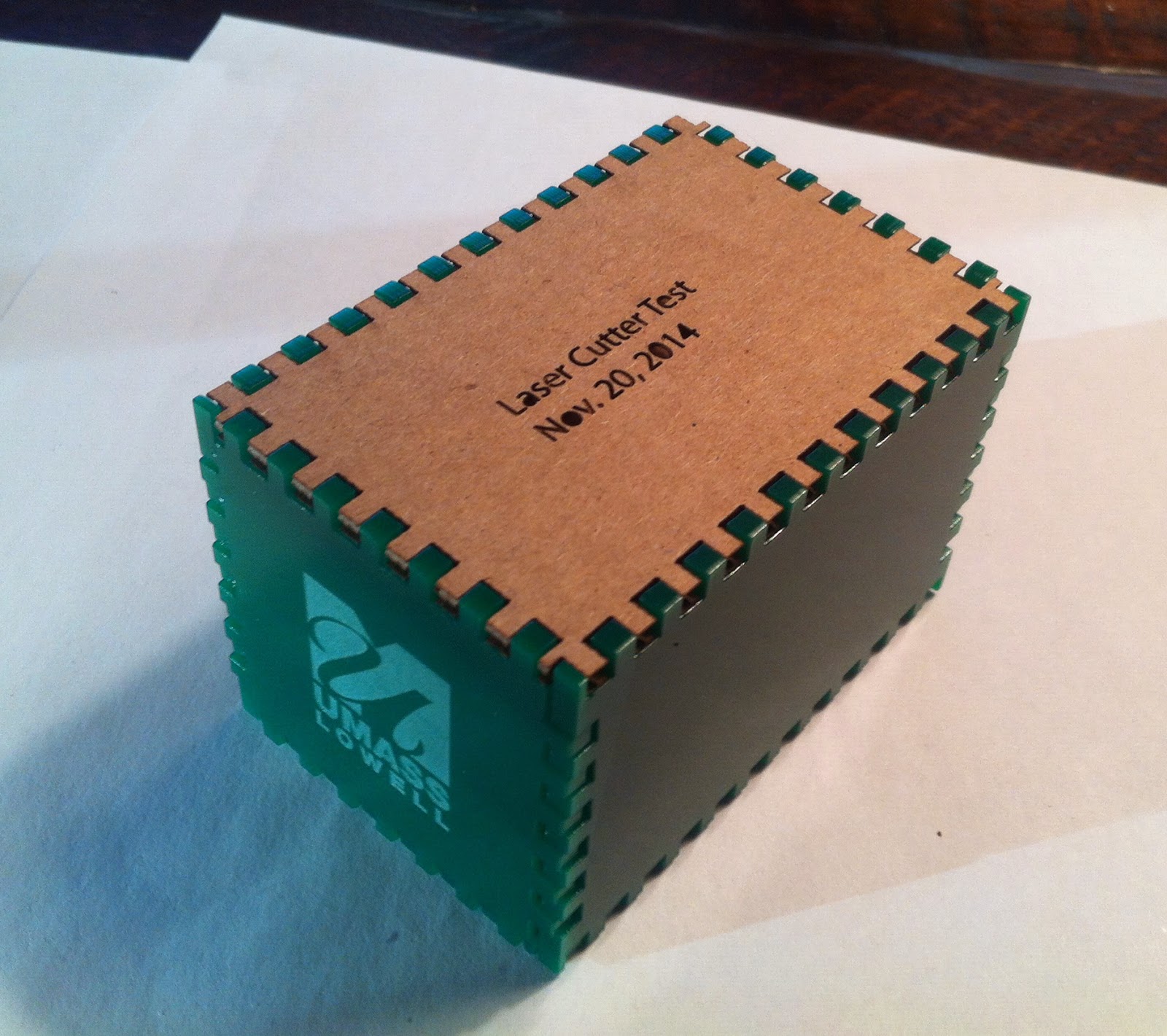Laser Cutting - Available Materials
The laser cutter is up and running... and materials for fabrication have arrived. In order to make things "easy", the materials are going to be limited to the following in stock materials:
- 1/8" thick acrylic - opaque green (McMaster-Carr P/N 8505K12)
- 1/4" thick acrylic - opaque blue (McMaster-Carr P/N 8505K92)
- 3/16" thick corrugated cardvoard (McMaster-Carr P/N 20585T22)
- 1/8" thick corrugated cardboard (limited supply)
- 3/16" thick hardboard pegboard (Lowes P/N 15497)
- 0.11" thick hardboard with white gloss surface on one side (Lowes P/N 16605)
Sample of all these materials are available in Perry 128.
If your project has a specific material requirement that can not be met using these stock materials, you may request that I order additional materials, or you may supply your own material. However, the laser cutter can only be used with a specific set of materials. Refer to page 213 of the Epilog Helix Manual for the list of recommended materials for the 60 W Epilog Helix.
Laser Cutting - Example Project
The following images are if a small box that I designed and fabricated to provide a quick example of the laser cutter's capabilities. The box is six-sided and the pieces fit together using what is referred to as finger joints.
Laser Kerf
One very important point to make note of is that the laser cutter removes material (it has a "kerf") and it cuts directly on the line that your have used to define your part. So, if you provide a SolidWorks model if a disk that has a 30 mm diameter, the actual diameter will be slightly less. The kerf width will vary with material, material thickness and laser settings. I have not had time enough to determine kerf estimates, but if tolerances are critical to your prototype, you can use this information as a guide and you may want to create a few test parts.
Finger-joint box
The box shown below has its walls and bottom made out of 1/8" green acrylic and a top made out of 1/8" corrugated cardboard. The finger joints on all parts were sized to be 0.125" and the parts fit together well but it is not a friction fit with the gap being a result of the laser kerf.
The parts were cut using the laser cutter in vector mode and the writing on the cardboard top and the UML logo were etched using the laser cutter in raster mode.The writing was added to the part model in SolidWorks and the UML logo was added to the model in Adobe Illustrator during the laser cutter setup process. The logo was a black and white image,

Finger-joint box part files
The image below is of the assembly model of the box. I have created a folder on my Google Drive that contains subfolders for each of the projects discussed in this blog. You can obtain the SolidWorks part and assembly files from the finger-joint-box folder.
The laser-cut request for this project would have been as follows:
The laser-cut request for this project would have been as follows:
- finger-joint-box-Bottom; 1/8" acrylic, Quantity - 1
- finger-joint-box-Side; 1/8" acrylic, Quantity - 2
- finger-joint-box-End; 1/8" acrylic, Quantity - 2
- finger-joint-box-Top; 1/8" cardboard, Quantity - 1
Additional Instructions: Place UML logo in the center of the part finger-joint-box-End. Note that the part request is for two or these pieces, the logo should only be placed on one of the parts.
Laser Cutting - Requesting Parts
You should request laser cut parts using the following procedure:
- Create SolidWorks part files of the parts that you need cut.
- Create a SolidWorks assembly of the your project (or at least the part of the project that contains the parts to be laser cut.
- Send the part files and the assemble file to the following email address
- The body of the email should contain the following information
- A list of the requested parts indicating specific material and quantity required
- Additional instructions as to the placement of images that will be etched into the parts
- The contact information for the person in your group who should be contacted in case of questions.


